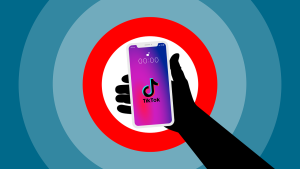Authors: Steven Cernak and Luis Blanquez
Section 8 of the Clayton Act prohibits certain interlocking directorates between competing corporations. But while the prohibition has been around since 1914, most antitrust lawyers pay little attention to it, partly because companies can quickly resolve any issues voluntarily.
We first brought Section 8 to the attention of our readers in 2022 because of comments by then-AAG Jonathan Kanter. Even more recent actions by the agencies, detailed below, plus the Hart-Scott-Rodino (HSR) Act’s new requirements under the updated filing form—soliciting information on overlapping directorates—should be enough for everyone to keep a closer eye on the issue, in particular private equity firms.
Clayton Act, Section 8 Basics
The prohibitions of Section 8, in its most recent form, can be simply stated: No person can simultaneously serve as an officer or director of competing corporations, subject to certain jurisdictional thresholds and de minimis exceptions. Truly understanding the prohibition, however, requires understanding all those italicized terms.
First, Section 8’s prohibition applies only if each corporation has “capital, surplus, and undivided profits,” or net worth, of $10M or more, as adjusted. The Federal Trade Commission (FTC) is responsible for annually adjusting that threshold for growth in the economy. Currently, for 2025, the thresholds are $51.380 million for Section 8(a)(1) and $5.138 million for Section 8(a)(2)(A). These new thresholds took effect on February 21, 2025.
Section 8 provides an exception where the competitive sales of either or each of the corporations is de minimis. Specifically for 2025, no interlocks are prohibited if (1) both of the entities have capital, surplus and undivided profits of $51,380,000 or less, or the competitive sales of either entity are less than $5,138,000; 2) the competitive sales of either corporation are less than 2% of that corporation’s total sales; or 3) the competitive sales of each corporation are less than 4% of that corporation’s total sales.
Originally, Section 8 applied only to directors of corporations; however, the 1990 amendments extended the coverage to officers, defined as those elected or chosen by the corporation’s Board. Despite the clear wording of the statute limiting it to officers and directors, some courts have considered the possibility that Section 8 might apply when a corporation’s non-officer employee was to be appointed a director of a competitor corporation.
The language of Section 8 clearly applies to interlocks between competing corporations. An interlock between a corporation and a competing LLC would not be covered by the statutory language or the legislative history of the original statute or amendment. The FTC and DOJ have not explicitly weighed in on application to non-corporations, although the FTC’s implementing regulations for Hart-Scott-Rodino cover LLC explicitly as “non-corporate interests” different from corporations. Still, the spirit of Section 8 would seem to cover any such non-corporate interlock. Also, any corporate director who also serves a similar role for a competing LLC would face an increased risk of violating Sherman Act Section 1.
Section 8 clearly applies if the same natural person sits on the boards of the competing corporations. It might also apply if the same legal entity has the right to appoint a natural person to both Boards, even if that entity appoints two different natural persons to the two Boards. That interpretation is consistent with the Clayton Act’s broad definition of “person” and has been supported by both the FTC and DOJ and the one lower court to consider the question.
As with other parts of the antitrust laws, the question of competition between the two corporations requires some analysis. The few courts to look at the question have held that corporations that could be found to violate Sherman Act Section 1 through an agreement would be considered competitors. On the other hand, these same courts did not define competitors more narrowly to be those corporations that would not be allowed to merge under the more extensive analysis of Clayton Act Section 7.
Recent DOJ and FTC Action
The DOJ has traditionally enforced Section 8’s prohibition on interlocking directorates, which has become a priority under the current Administration.
As a result, there have recently been an increasing number of instances where directors have resigned to resolve DOJ concerns.
In April 2024, two directors from Warner Bros. Discovery Inc. (WBD)–– Steven A. Miron and Steven O. Newhouse––resigned from the WBD board after the Antitrust Division expressed concerns that their positions on both the WBD and Charter Communications Inc. boards potentially violated Section 8 of the Clayton Act. Charter, with its Spectrum cable service, and WBD, through its Max streaming subscription services, both provide video distribution services to customers. The division’s enforcement efforts to date have unwound or prevented interlocks involving at least two dozen companies.
More recently, in September 2025, the FTC found that Sevita and Beacon Specialized Living Services, Inc.—both owned by private equity investors and providers of services for individuals with intellectual and developmental disabilities—had overlapping board members, violating Section 8 of the Clayton Act. As a result, three directors resigned from the board of Sevita Health following FTC enforcement actions. The FTC didn’t engage in any formal legal action against the companies, and the resignations were enough to resolve the FTC’s competition concerns without further legal action.
Recent DOJ Speeches
The DOJ action that led to the resignations is consistent with recent speeches by DOJ officials
In 2022, Jonathan Kanter, former assistant attorney general in charge of the Antitrust Division at the DOJ, made some significant remarks about Section 8. First, he highlighted the fact that the Division is committed to litigating cases using the whole legislative toolbox that Congress has given them to promote competition, including Section 8 of the Clayton Act. Second, he reminded everyone that Section 8 helps prevent collusion before it can occur by imposing a bright-line rule against interlocking directorates. Third, that for too long, Section 8 enforcement has essentially been limited to their merger review process. And last but not least, that the Division will start ramping up efforts to identify violations across the broader economy and will not hesitate to bring Section 8 cases to break up interlocking directorates. Another former head from the FTC made a similar statement back in 2019, indicating how Section 8 of the Clayton Act protects against potential information sharing and coordination by prohibiting an individual from serving as an officer or director of two competing companies.
 The Antitrust Attorney Blog
The Antitrust Attorney Blog












